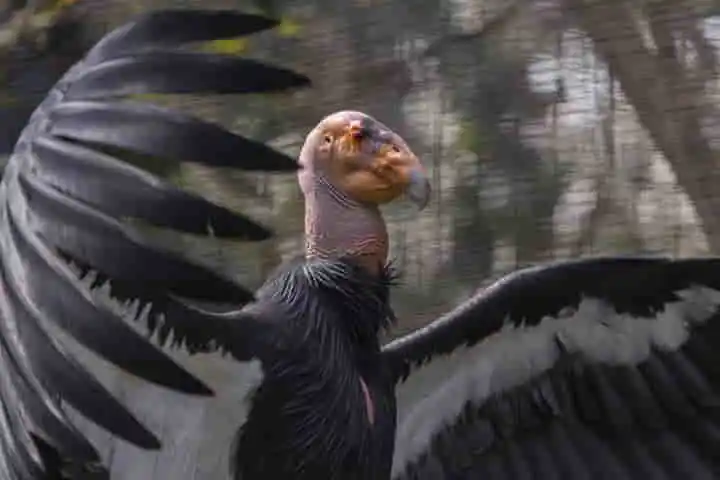It is rather a rare occurrence – parthenogenesis, which is also known as virgin birth – but it is known to have taken place among lizards, swellsharks and water dragons too. It is asexual reproduction in which the egg of the female develops without the aid of sperm.
When this phenomenon happened in the case of California condors, which are similar to vultures, it had the scientists sit up, according to a report in smithsonianmag.com.
In the 1980s the total number of these birds came down drastically to as low as 22 and in 1987 it became extinct in the wild. Making an effort to save this endangered species, the remaining condors were seized and a breeding programme in captivity was started for them, which continues. In view of a very limited genetic pool and a weak population, the programme of captive breeding had to be systematic.
A study by conservation scientists at the San Diego Zoo Wildlife Alliance found that the critically endangered California condor can reproduce without mating https://t.co/vNgytIZk4l pic.twitter.com/aiTaOZN1zP
— Reuters Asia (@ReutersAsia) November 3, 2021
Findings published this week in the Journal of Heredity brought to light a puzzling facet of the breeding programme. The San Diego Zoo Wildlife Alliance researchers during the review of the genetic data of the birds discovered that two male chicks — SB260 and SB517 – had no genetic contribution from males who are a part of the programme.
Oliver Ryder, the co-author of the study who is a geneticist at the San Diego Zoo Wildlife Alliance in a media release stated: "This is truly an amazing discovery. We were not exactly looking for evidence of parthenogenesis, it just hit us in the face. We only confirmed it because of the normal genetic studies we do to prove parentage."
These chicks passed away prior to their reaching sexual maturity unlike other parthenotes such as domesticated turkeys, pigeons and chickens, which pass away before hatching.
Condor numbered SB260 lived for two years before dying in 2003 in the wild probably due to malnourishment while the bird with number SB517 which was small and in captivity died in 2017 aged eight years because of an infection in the foot.
Biologist Demian Chapman of Mote Marine Laboratory and Aquarium told the Atlantic: "They certainly weren’t, shall we say, shining specimens of the condor.”
This is true as these birds manage to live for nearly 60 years and according to Ryder the early death of these two condors could be due to parthenogenesis. National Geographic observed that these birds may have had underlying problems caused due to genetic mutations because of lack of genetic diversity which comes into being from another parent’s DNA.
Also read: Assassin Bugs That Master The Art Of Deception – Outsmart Spiders
There is some proof that parthenogenesis occurs among females when no mates are available and this is true of a population that is imperilled. This is what probably forced the smalltooth sawfish which was endangered critically to use this method in the wild. Thus, it is seen that females who are in captivity and don’t have any male mates, procreate asexually.
What makes the case of the condors really intriguing is the fact that the female species which laid these two eggs had male living with them. Further, they had mated with the males before and after the parthenotes were born. This threw up the big questions as to why did they breed asexually? Though scientists don’t have an answer, they are working on it.
Ryder talking to Gizmodo said: "We only now have the genetic tools to look at this in detail. Previously, parthenogenesis was really identified by seeing females who weren’t housed with males have offspring. But now we know the condor can have offspring while being housed with males and it begs the question, 'Is this going on more than we know?'"
Also read: In Africa many elephants are now born without tusks in nature's revolt against poaching
That is possible as these two cases came to light because of review of genetic data. It also must be kept in mind that these births took place twice and that too at separate times with different females, so according to Ryder it could be a recurring oddity.
Even if parthenotes of the past have slipped out, Ryder wishes that they turned out to be healthy adults as this could benefit the species in future. With a population which so imperilled every egg counts.




















